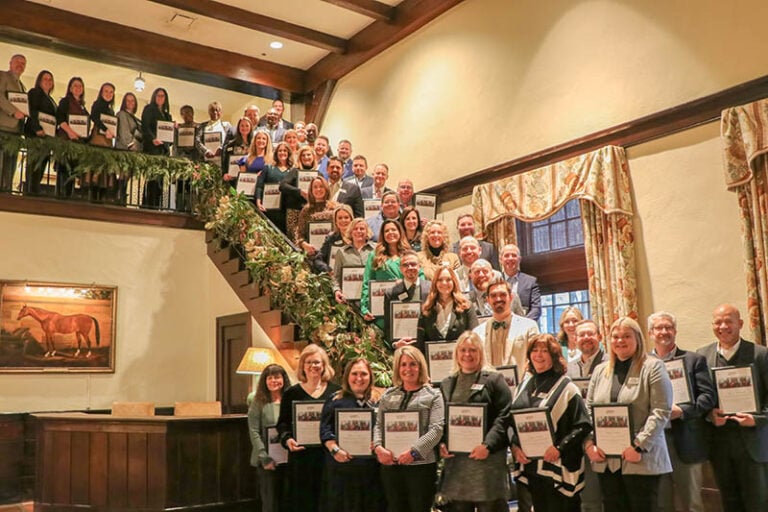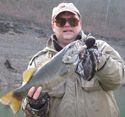By Lee McClellan
Special to NKyTribune
This is the first installment of the “Spring Fishing Fever” series of articles, detailing productive fishing techniques and opportunities across Kentucky. The series will continue until early summer. An archive of past articles is available on the department’s website at www.fw.ky.gov).
The release of the annual Fishing Forecast by the Fisheries Division of the Kentucky Department of Fish and Wildlife Resources is a welcome sign that spring isn’t far away. Reading the forecast primes the pump of enthusiasm for fishing trips in 2016.
“For a general angler, the Fishing Forecast is a good place to start planning a trip,” said Jeff Ross, assistant director of fisheries for Kentucky Fish and Wildlife. “It is a good resource for those without a lot of time to fish.”

Each year, fisheries biologists and technicians sample fish populations with non-lethal techniques in lakes, rivers, creeks and reservoirs across Kentucky.
“They follow trends in fisheries as related to spawning success and growth rates and extrapolate degrees of fishing success,” Ross said.
The Fishing Forecast also has a cheat sheet where anglers may quickly search waterbodies across Kentucky for the presence of their favorite species before planning a trip. You may view and print the forecast online at www.fw.ky.gov.
Kentucky has seven fisheries districts. Here is one choice rated “excellent” for each fishery district to hit in 2016:
Western Fisheries District
Largemouth Bass – Lake Barkley:
Lake Barkley is often overshadowed by its neighbor, Kentucky Lake, for the quality of its largemouth bass fishing. Barkley, however, holds its own. In early spring, fish flats adjacent to channels with jigs or medium-running crawfish-colored crankbaits. As the water warms, fish wacky-rigged soft plastic stickbaits or topwater lures near bushes or other woody cover.
Northwestern Fisheries District
Hybrid Striped Bass – Rough River Lake:
Fish the headwater areas in the South and North Fork arms of the lake in spring with silver casting spoons, large in-line spinners in white or grey and 5-inch pearl curly tailed grubs for hybrids. In summer, anglers troll shad-colored crankbaits across main lake points. Look for jumping hybrids in the early morning in late summer and cast a topwater or casting spoon near the jump.
Southwestern Fisheries District
Catfish – Barren River Lake:
The lake holds good numbers of channel and flathead catfish. Blue catfish stockings begun in 2010 are now paying dividends with fish already more than 30 inches long. Mud or pea gravel flats near major creek channels hold channel catfish. They strike gobs of nightcrawlers fished on the bottom in spring and at night in summer.
Fish bluffs with small, live bluegill for flatheads and open water areas with live or cut bait suspended under jugs or noodles for blues. Blue cats also hit shad-colored crankbaits worked in the same open water areas.
For more outdoors news and information, see Art Lander’s Outdoors on KyForward.
Central Fisheries District
Largemouth Bass – Guist Creek Lake:
This 317-acre lake in Shelby County holds an excellent population of largemouth bass with trophy potential. In spring, fish 3-inch tubes in the green pumpkin color in the upper reaches of the Guist Creek arm and Tick Creek. Fish the rocky banks near the dam in summer with 3/8-ounce football jigs in the soft-shell color or 7-inch black straight-tailed worms rigged on a 3/16-ounce Shakey head.
Southeastern Fisheries District
Crappie – Lake Cumberland:
The drawdown of the lake for repairs on Wolf Creek Dam allowed trees and other vegetation to repopulate the formerly submerged areas. With repairs complete, this now flooded vegetation benefits crappie. Lake Cumberland holds impressive numbers of 12- to 14-inch fish. In spring, fish live minnows near cover in the upper ends of major creek arms such as Fishing Creek as well as the headwaters of the lake near the mouths of Laurel and Rockcastle rivers.
Northeastern Fisheries District
Muskellunge – Cave Run Lake:
The lake continues to produce fat, healthy muskellunge year after year. In spring, look for mud flats in the back of the large coves and creek arms and swim large rattling, lipless crankbaits over them for muskellunge. They also hit 10-inch pearl or chartreuse curly-tailed grubs fished in the same areas. As the water warms, troll channel drops with a Believer-style crankbait.
Eastern Fisheries District
Bluegill – Fishtrap Lake:
The lake holds good numbers of huge bluegill 9 inches and longer. Fish shoreline cover with redworms suspended under bobbers in spring through summer. Fly rod anglers find good sport fishing sponge spiders over aquatic weeds and sunken tree tops in summer.
The current fishing license year expires on the last day of February annually. Remember to purchase your new fishing license if fishing any of these productive waters after Feb. 29.
Author Lee McClellan is associate editor for Kentucky Afield magazine, the official publication of the Kentucky Department of Fish and Wildlife Resources.
The Kentucky Department of Fish and Wildlife Resources manages, regulates, enforces and promotes responsible use of all fish and wildlife species, their habitats, public wildlife areas and waterways for the benefit of those resources and for public enjoyment. Kentucky Fish and Wildlife is an agency of the Tourism, Arts and Heritage Cabinet. For more information on the department, click here.






















